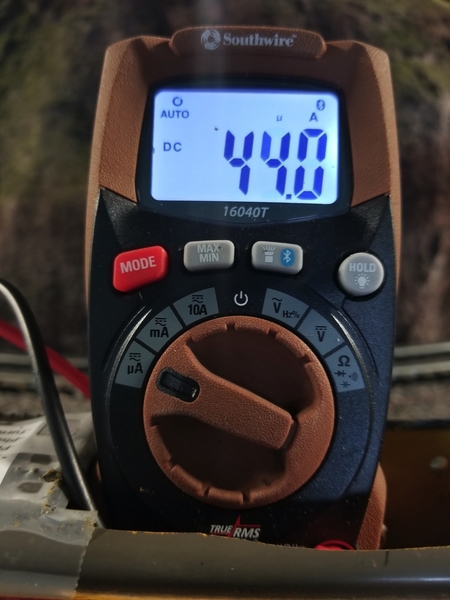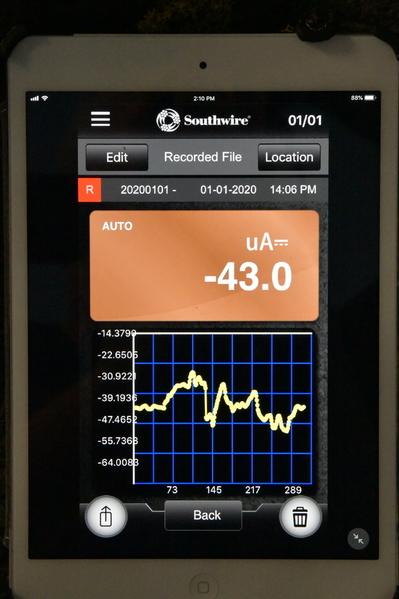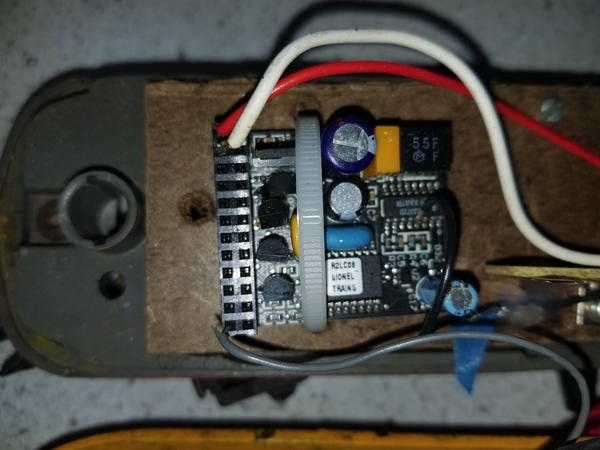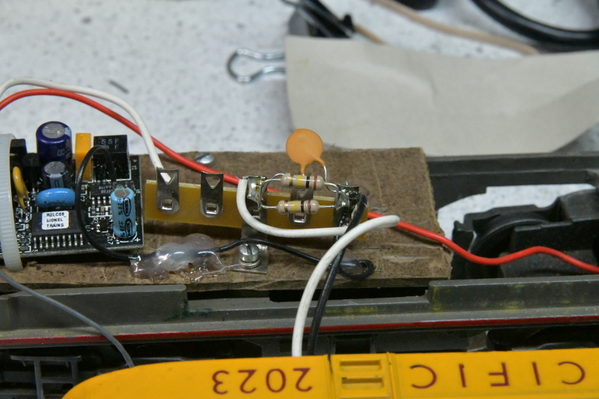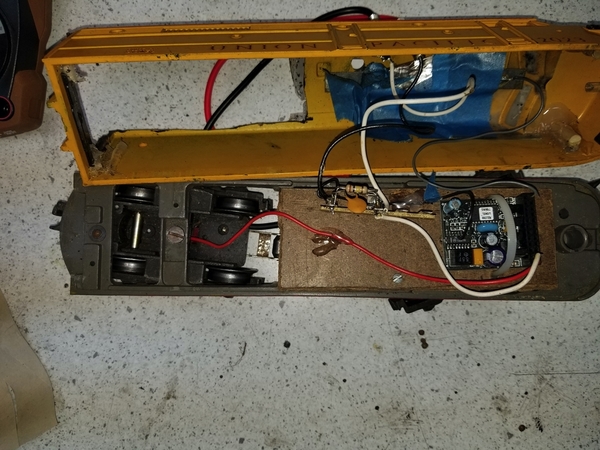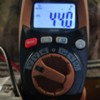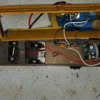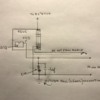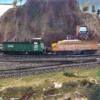As you may know at the NJ Hi-Railers we have quite a large layout. We have over 7500 ft of track and the layout is about 185' x 35'. This leads to all kinds of command control issues. We been working on improving the TMCC/Legacy signal for years. I'd like to share our latest technique.
What we've done in the past includes:
- Run numerous ground wires above and next to tracks. (Never below!)
- Separated the U terminal signal wire as much as possible from the power and ground wires.
- Acquired Dale's original TMCC signal tester to ensure our command bases were good.
- Built Jim Lefebre's original tube 455khz signal booster. This made a TREMENDOUS difference.
- Acquited an oscilloscope to visualize the TMCC waveform and PPV voltage levels.
- One of our members (Bob DeGuarde) build a signal strength meter car by tapping off the signal strength pin on a Lionel R2LC radio board and displaying the amperage on a multi-meter. This enabled us to check the signal strength on local areas of the layout. We have found that on the meter display a value of less than 35 is problematic for many steamers. A few steamers have problems between 35-40 and all diesels have problems below 30. 40 and above is generally good.
- Acquired and installed Gunrunner's build of Dale's solid-state signal booster.
- And I'm sure a few other things I've forgotten!
All this has made it possible to run TMCC/Legacy engines reliably. But we still would have occasional "mysterious" problems. A while ago we had a thought that if we could find a sensitive enough Bluetooth enabled multi-meter perhaps we could run it around the track and record a continuous signal strength.
Well, Bob De Guarde has built it and we are having fantastic results. We can record a baseline of the signal strength around an entire line and then see the bad spots, extend our ground wire system to them and record the resultant changes in signal strength.
Below is a graph showing our results after just one fix session. We decided to work on our Yellow Line first as it's very popular and has been giving us issues lately. Now we know why! The blue line was the 1st measurement we took. After a couple of updates, the yellow line shows the improvements. The next step will be to extend our ground wire network to the area on the line represented by the low spots on the right side of the graph. And then work on the other weak spots.
The X-Axis is the number of samples normalized to 1000 and the Y-Axis is the signal strength as captured by the multi meter.
I'll post an updated graph after our next fix session.











